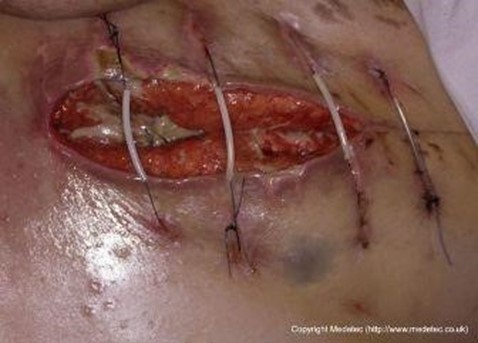A nurse is providing care for a client who experienced a myocardial infarction prior to a cardiac arrest. Which of the following laboratory tests will identify early injury to the cardiac muscle?
Creatine kinase (CK) test
Creatine kinase-myocardial band (CK-MB) test
Brain natriuretic peptide (BNP) test
Troponin T test
The Correct Answer is D
Answer: D. Troponin T test
Rationale:
A. Creatine kinase (CK) test: While creatine kinase isoenzymes, including CK-MB, can be elevated following myocardial infarction (MI), they are not specific to cardiac muscle injury. CK is found in various tissues throughout the body, so elevated levels can also indicate damage to skeletal muscle or brain tissue, among other sources.
B. Creatine kinase-myocardial band (CK-MB) test: CK-MB is a cardiac-specific isoform of creatine kinase, and elevated levels can indicate myocardial injury, particularly in the context of an acute MI. However, troponin T is a more sensitive and specific marker for myocardial injury.
C. Brain natriuretic peptide (BNP) test: Brain natriuretic peptide is primarily used in the diagnosis and management of heart failure. While elevated BNP levels can indicate heart muscle strain or stress, they are not specific markers for acute myocardial infarction or early injury to the cardiac muscle.
D. Troponin T test: This is the correct answer. Troponin T is a highly specific marker for cardiac muscle injury. Elevated troponin levels can be detected within hours of myocardial infarction and persist for several days, making it an essential tool in the diagnosis of acute coronary syndromes, including myocardial infarction. Troponin T is considered one of the gold standard biomarkers for detecting early injury to the cardiac muscle.
Nursing Test Bank
Naxlex Comprehensive Predictor Exams
Related Questions
Correct Answer is A
Explanation
Answer and explanation.
The correct answer is choice A. A nontender, protruding abdomen is a normal finding for a 2year-old toddler. This is due to the immature development of the abdominal muscles and the relatively large size of the liver and kidneys in relation to the rest of the body.
Choice B is wrong because the head circumference should be equal to or less than the chest circumference by age 2. A head circumference that exceeds the chest circumference could indicate hydrocephalus or other neurological problems.
Choice C is wrong because the fontanels, or soft spots on the skull, should be closed by age 18 months. Palpable fontanels could indicate dehydration, malnutrition, or congenital disorders.
Choice D is wrong because the natural loss of deciduous teeth, or baby teeth, usually begins around age 6. Premature loss of teeth could indicate dental caries, trauma, or endocrine disorders.
Correct Answer is C
Explanation

Wound dehiscence can lead to infection, bleeding, and evisceration (protrusion of internal organs through the incision). The nurse should report this finding to the provider immediately and cover the wound with a sterile dressing moistened with sterile saline solution.
Choice A is wrong because mild swelling under the sutures near the incisional line is a normal finding in the early stages of wound healing. It does not indicate infection or dehiscence unless accompanied by other signs such as redness, warmth, pain, or purulent drainage.
Choice B is wrong because crusting of exudate on the incisional line is also a normal finding that indicates the formation of a scab.
A scab protects the wound from infection and helps it heal faster. The nurse should not remove the scab unless instructed by the provider.
Choice D is wrong because pink-tinged coloration on the incisional line is another normal finding that shows healthy granulation tissue.
Granulation tissue is new tissue that fills in the wound and helps it close. It is usually pink or red and moist.
The nurse should follow these general tips for postoperative abdominal incision care:
- Always wash your hands before and after touching your incisions.
- Inspect your incisions and wounds every day for signs your healthcare provider has told you are red flags or concerning.
- Look for any bleeding.
If the incisions start to bleed, apply direct and constant pressure to the incisions.
- Avoid wearing tight clothing that might rub on your incisions.
- Try not to scratch any itchy wounds.
- You can shower starting 48 hours after your operation but no scrubbing or soaking of the abdominal wounds in a tub.
- After the initial dressing from the operating room is removed, you can leave the wound open to air unless there is drainage or you feel more comfortable with soft gauze covering the wound.
- Surgical glue (Indermil) will fall off over a period of up to 2-3 weeks.
Do not put any topical ointments or lotions on the incisions.
- Do not rub over the incisions with a washcloth or towel.
- No tub baths, hot tubs, or swimming until evaluated at your clinic appointment.
Whether you are a student looking to ace your exams or a practicing nurse seeking to enhance your expertise , our nursing education contents will empower you with the confidence and competence to make a difference in the lives of patients and become a respected leader in the healthcare field.
Visit Naxlex, invest in your future and unlock endless possibilities with our unparalleled nursing education contents today
Report Wrong Answer on the Current Question
Do you disagree with the answer? If yes, what is your expected answer? Explain.
Kindly be descriptive with the issue you are facing.
